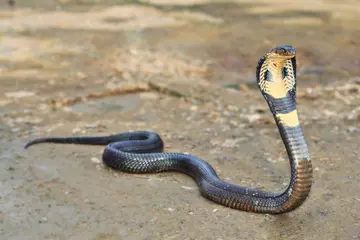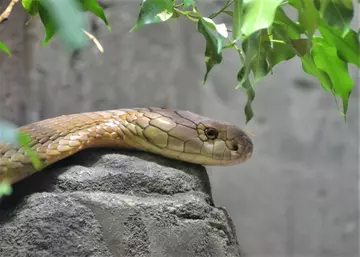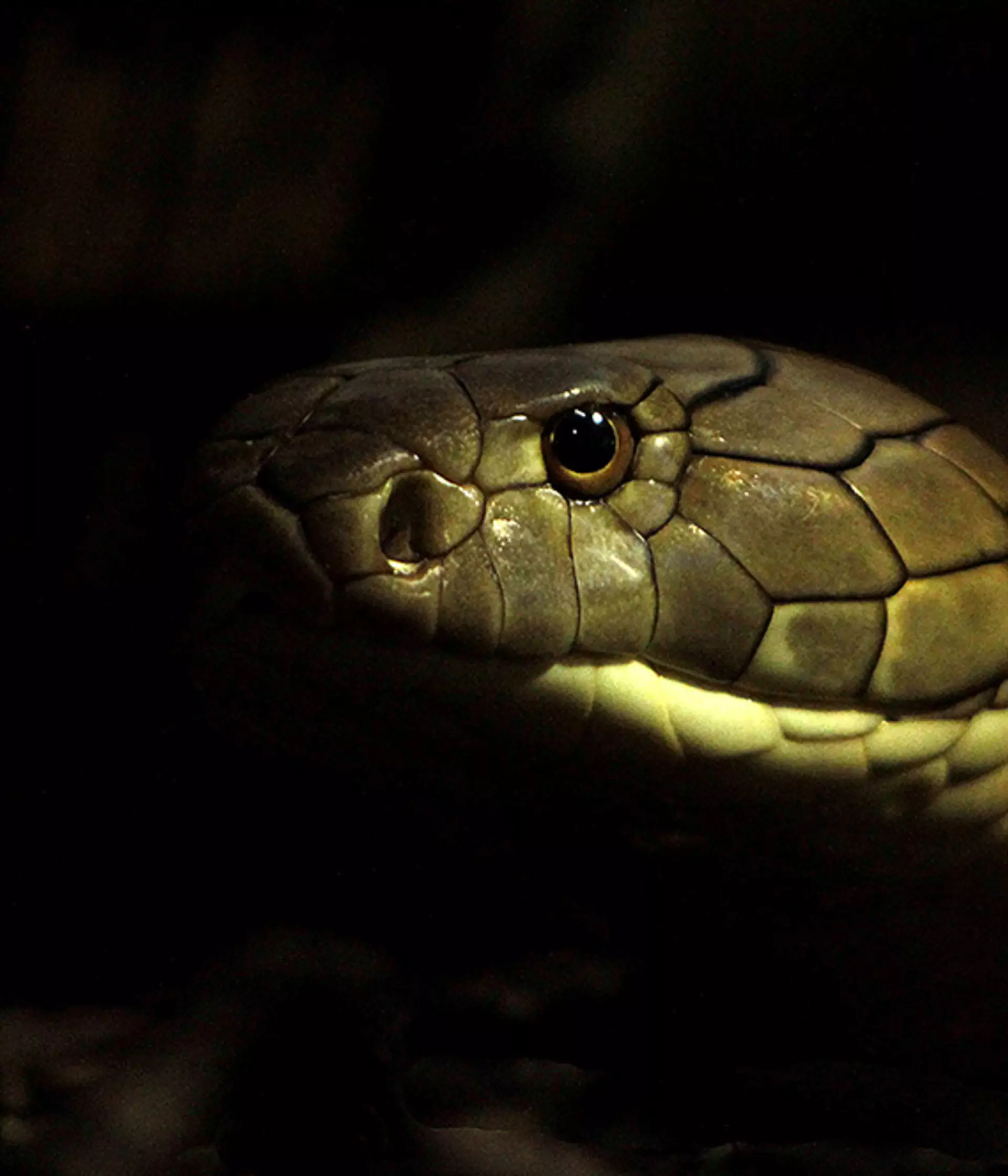
King cobra facts
- The world's longest venomous snake growing in excess of 5 m.
- King cobras are the only snake known to build a nest for its eggs, laying them in vegetation, leaves and twigs that it gathers into a mound.
- They often flee when they feel threatened and bites are rare; they are one of the few snakes to emit a growl like hiss as a warning. When threatened they display a narrow hood.
- A king cobra, like other snakes, receives chemical information via its forked tongue.
- They subdue prey with massive quantities of neurotoxic venom.
- King cobras are an egg laying species. They construct a nest out of rotting vegetation into which they lay up to 50 eggs.
What do king cobras look like?
King cobras are either olive-green, tan or black in colour. They have a pale underside and are covered in smooth scales.
Giant Chinese salamander at London Zoo

What do king cobras eat?
They feed on other snakes and occasionally lizards.

King cobra habitat
This species is found in a variety of habitats, primarily in pristine forests, but it can also be found in degraded forest, mangrove swamps and even agricultural areas with remnants of woodland.
Reptiles and aquariums at Whipsnade Zoo
King cobra threats
The king cobra is, at risk from the harvesting of individuals for skin and traditional Chinese medicine. In some places it is also suffers high levels of persecution by humans.
King cobra size
18.5ft to 18.8ft average length
Reptiles at London Zoo
Komodo dragon
The largest and heaviest reptile in the world, which can eat up to 80% of its body weight in just one feeding.
Galapagos tortoises
With a lifespan of 177 years old, some Galapagos tortoises alive today would have around since before the American civil war.
Blue tree monitor
Blue tree monitors are known for their amazing puzzle solving intelligence, and are isolated to a small island in Indonesia, which is around the same size as the Isle of Wight.
